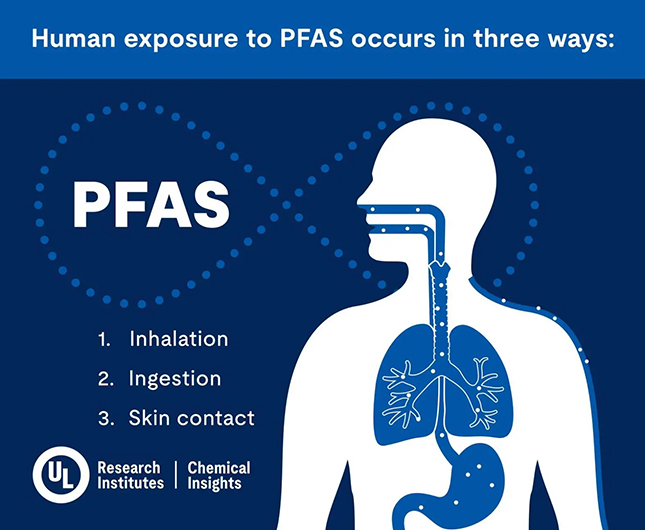ATLANTA, GA -- Chemical Insights Research Institute (CIRI) of UL Research Institutes has released its first report on a multi-phase research study of per- and polyfluoroalkyl substances (PFAS), commonly referred to as “forever chemicals,” associated with consumer and commercial textiles.

This ongoing study, conducted in partnership with the Rollins School of Public Health at Emory University, provides insights into the measurement of PFAS in a variety of consumer textiles and how these PFAS enter the human body. Materials studied included consumer wearables and textile coverings for upholstered furniture.
“This research contributes to CIRI’s strategic goal of evaluating chemicals of concern used in our everyday products, and how they can affect human health, including that of children,” said Dr. Marilyn Black, CIRI’s vice president and senior technical strategic advisor. “Some data suggest that fetal development and cognitive capacity of young children may be altered.”
Consumer apparel items from various brands were evaluated including women’s and men’s pants, rain jackets, leggings, and t-shirts. Specimens were prepared for composition analysis to identify and quantify legacy and emerging PFAS.
For consumer apparel:
• Of the 20 PFAS analytically targeted, 11 were detected in the textiles studied
• Per-fluorohexanoic acid (PFHxA) was the most commonly detected PFAS across the consumer textiles evaluated
• Levels of measured PFAS showed variability within a textile material, indicating its inhomogeneous presence
• Specific PFAS identified and their levels varied across consumer brands
For upholstery fabrics:
• Of the 20 PFAS analytically targeted, 5 PFAS were detected at quantifiable levels
• As with consumer apparel PFHxA was found in high abundance for each fabric brand examined
An interesting finding was that the pattern of PFAS identified in the studied textiles did not fully align with those PFAS found in human blood as recently reported by the U.S. Centers for Disease Control and Prevention. This may indicate a lag in biomonitoring in relation to current market PFAS use.
CIRI is expanding its research to determine how textile use and age can lead to potential dermal exposure, skin migration, and ingestion.
Read the complete report. |
